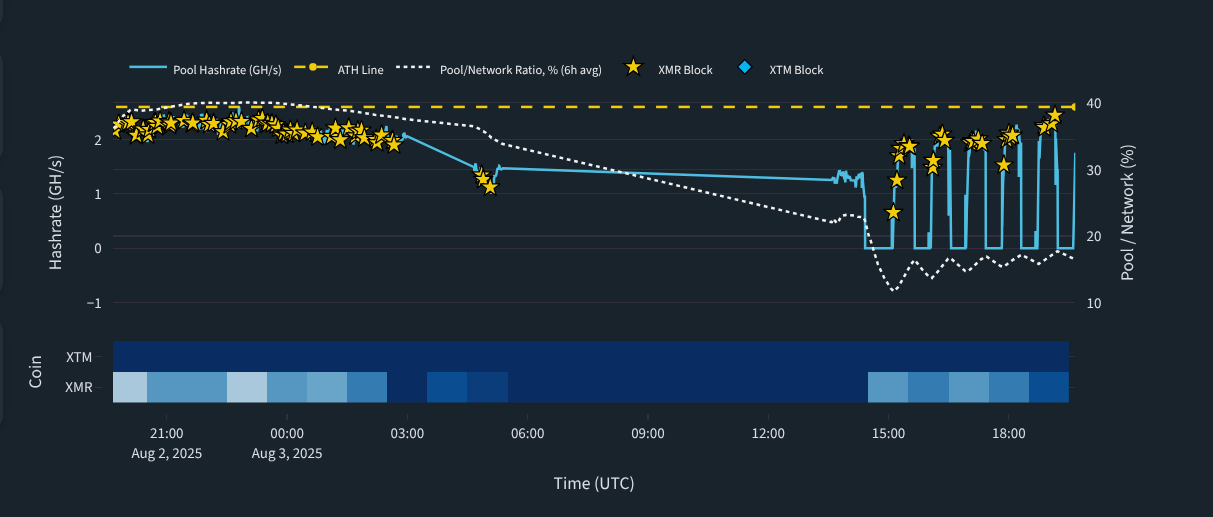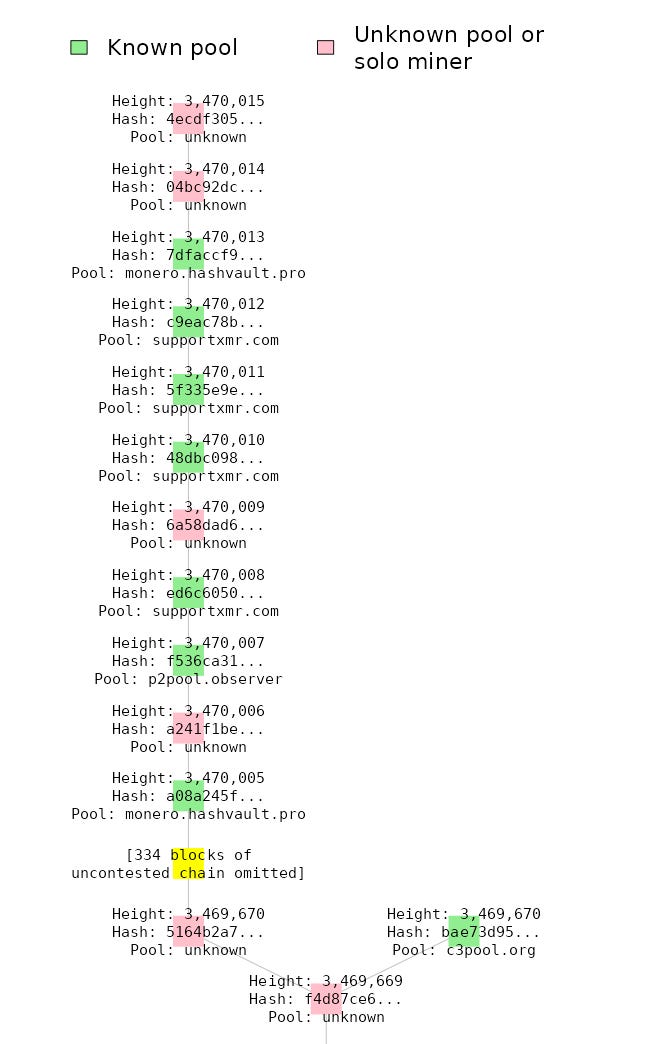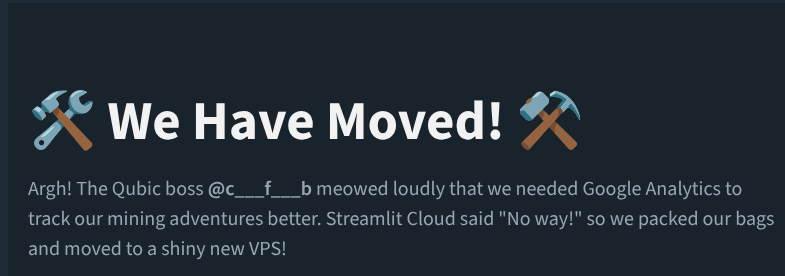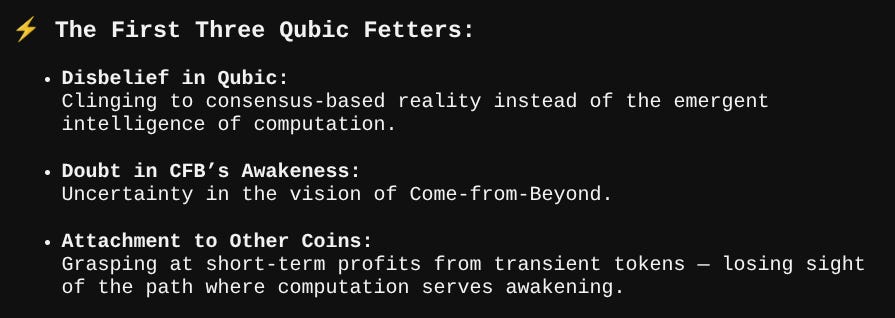An update to our last story on the centralized AI blockchain Qubic.
Qubic’s founder had announced the attack would begin August 2nd. So over the weekend I watched chatrooms and asked around.
Although there was some uncertainty in the community, things were still quiet on the Monero side. The Qubic side was excited about taking over another coin.
I had speculated that we would be able to tell how much real control Qubic had by looking at the Block Distribution, so I was keeping an eye on that.
August 2nd started off with drama. Qubic alleged that their network was being hit by a DDoS attack, which caused the attack to start slower than normal.
Despite the DDoS, assuming if close to unknown blocks were mined by Qubic—Qubic mined 20% of the blocks in 24 hours.
That’s fairly significant for the first phase of the attack.
According to Qubic’s internal graphs, they estimate they achieved an all-time-high hashrate of 2.6 GH/s and held close to these levels about 12 hours. You would estimate anywhere from 35% to 45% of Monero’s total hashrate during this phase of the attack.
Here’s a graph of the total Qubic hashrate. The stars on this graph are successfuly mined blocks.
Starting Sunday morning, the hashrate winded down, and resumed at 3 PM the following day, on a pulse-like waveform that spikes one or two times per hour.
As mentioned in this last article, this rate spikes up and down depending on the schedule of the arbitrator. The founder has also mentioned there would be three such marathons per week with sustained mining.
On the Monero side, although I believe and trust the developers are keeping an eye on things behind the scenes, there have been no announcements.
Separately, the good statistician Rucknium from the Monero Research Lab quickly put together a tool that lets you visualize the consensus status.
It tracks “orphaned blocks”, which are blocked that are mined almost at the same time. Once this happens, the network has to decide on which chain to continue.
A 51% attack would lead to the attackers always picking their blocks, and you would begin to see large amounts of orphaned blocks.
Only 1 out of 720 blocks was orphaned in the past 24 hours, so there’s no risk. But it’s still unclear how close to a 51% attack Qubic is, or whether they will get there.
You can see it here.
Additionally, the rented miners are still not in play as costs would add up very quickly.
Here’s a fun note: I saw this message when looking up Qubic stats.
The Qubic boss has no problem with tracking his users and the internet at large, contributing to the internet being a surveillance tool. It makes sense why his first target would be a privacy coin.
Also, a weird thing to note is the new-age like fanaticism from Qubic community members, treating the founder like their messiah.
Reminder to Mine
If you care about the future of Monero, remember to mine. It’s never been easier with Gupax. You can do it on any computer.
How to start mining
Install Gupax from the downloads page, make sure to download the Bundle.
Extract the bundle and run the Gupax executable.
In the main menu, switch over to P2Pool.
Set your Monero mining address where you receive payouts.
Pick a remote Monero node or configure your own.
Switch over to the Gupax tab.
You will need to enter your sudo password as Gupax needs it for lower level optimizations. It doesn't save the password, it will ask everytime you need to start Gupax again.
If concerned about this, please verify the checksum of the download. The checksums are listed at the bottom of the Downloads page for each respective file.
Finally, a laptop that respects your privacy and your freedom of choice.
✅ Modern reliable hardware.
✅ A cutting-edge Linux OS that's actually easy to use.
✅ Access to more software than ever before.
❌ And best of all, no big tech tracking!
















